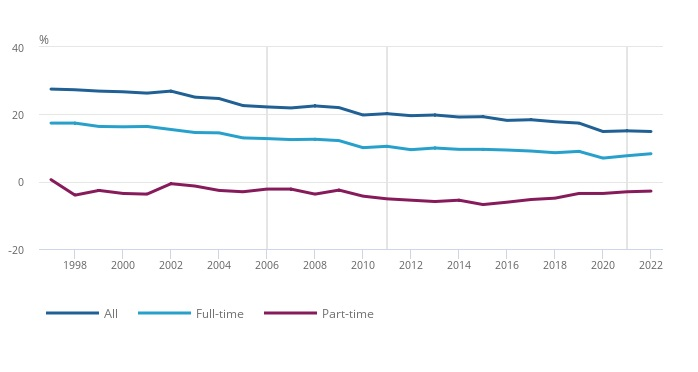Gender and ethnicity pay gap
The pay gap is a measure of the difference between the average pay in an organisation – of men and women or people of different ethnicity.
It is unlawful to pay people unequally on the grounds of gender or ethnicity under the Equality Act 2010.
Pay gaps are measured by the difference in the average hourly wage of different groups across a workforce. For example, the gender pay gap is measured by the difference in the average hourly wage of all male and female staff in an organisation. The ethnicity pay gap is measured by the difference in the average hourly wage of all staff from minority ethnic backgrounds compared to white staff.
Measuring pay gaps can be a useful way for organisations to understand to what extent they pay their staff equally in relation to gender and ethnicity. Organisations can then take action to reduce any inequality.

last decade it has fallen by approximately a quarter among full time
employees and all employees.
Gender pay gap for median gross hourly earnings (excluding overtime), UK, April 1997 to 2002.
Source: Office for - Annual Survey of Hours and Earnings (ASHE)
Page last updated: 20 November 2023
